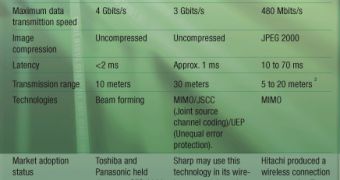The Silicon Valley startup Quantenna announced the first fully integrated 802.11n chipsets featuring 4×4 MIMO and transmit (Tx) beamforming. The new product has been designed to offer guaranteed wireless bandwidth within homes. According to the company, the chipset combines in a unique manner a 4×4 radio transceiver/antenna, concurrent dual band mode, mesh networking and transmit (Tx) beamforming.
“Our unique combination of cutting-edge 4×4 MIMO and Tx beamforming position Quantenna in the forefront of the highly competitive Wi-Fi chip market,” said Dr. Behrooz Rezvani, Quantenna’s founder and CEO. The new chipset can support real-time video transmission via the 5 Ghz band as well as data transmission over the 2.4 Ghz band. Its adaptive vector mesh routing and the high efficiency power amplifiers with 18 dBm output power along with low-noise amplifier (LNA) create a front-end module.
The startup also announced that an entire line of next-generation chipsets is under development at the moment. The new series will include the QHS1000, able to deliver up to 1 Gbps link speed and 600 Mbps data throughput, the QHS600, which comes with up to 600 Mbps link speed and 400 Mbps data throughput, and QHS450, featuring up to 450 Mbps link speed and 200 Mbps data throughput. The QHS family of chipsets is expected to enter sampling with top-tier customers in Q4 2008.
Currently, there are three wireless systems for connecting HDTVs that compete for the home segment. The bands for which the battle of technologies is on are 5 GHz, 60 GHz, and ultra wideband (UWB). It also seems that many of the large wireless vendors are still waiting to see the evolution of the market, says ABI Research.
The first system of the three is WirelessHD, which works on the unlicensed 60 GHz band. The data transmission can reach 4 Gbits/s on this band, which can cover a ten meter distance. WirelessHD has been developed SiBeam and is supported by Intel, LG, Matsushita Electric, NEC Corporation, Samsung, LTD, SiBEAM, Sony and Toshiba. The IEEE 802.15.3c group is also working on defining a basic physical layer standard for 60 GHz radios.
A second such system is the Wireless High Definition Interface (WHDI), which works on the 5GHz band. The technology has been developed by Amimon, an Israeli firm, and can reach data transfer speeds up to 3 Gbits/s. On the other hand, the WiFi 802.11n technology using MIMO boosts only 600 Mbps data rate speeds and is unable to reach a 3-Gbit/s data rate. Amimon used an existing signal-processing technology called joint-source channel coding to fix this, and not the traditional compression which sees latency.
The Wireless HDAV is the third wireless system that could be used for connecting HDTVs, and it’s being developed by Sigma Designs and Fujitsu Microelectronics America. This solution will support both H.264 format and UWB based on the WiMedia standard, since Sigma comes with a video processor and a WiMedia compliant UWB chip set, while Fujitsu offers an H.264 video codec chip. The WiMedia Alliance works on Ultrawideband (UWB) in a band ranging from 4.2 to 4.8 GHz or higher. It seems that their Wireless USB standard is able to achieve a data rate of 480 Mbits/s while it is based on the compression and expansion of HD video images.

 14 DAY TRIAL //
14 DAY TRIAL //